#ballet royal de la nuit
Text
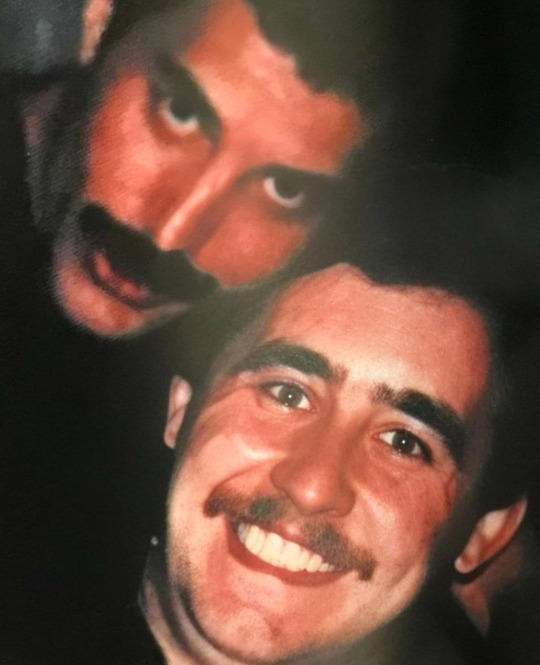
En 1977, j'ai rejoint le Royal Ballet en tant que costumier.
C'est comme ça que j'ai été présenté pour la première fois à Freddie Mercury, en tant que costumier au Royal Opera House travaillant sur le changement de costumes.
J'entrerais dans le jeu quand des réparations rapides ou un changement de costume étaient nécessaires pendant la performance.
Dans le cadre de l'entourage de la compagnie de ballet, j'ai été invité à la boîte de nuit Legends pour une fête après le spectacle le 7 octobre 1979. Là, j'ai eu l'occasion d'échanger deux mots avec Freddie pour la première fois même si la conversation était très courte. J'ai dû lui faire bonne impression. (P.F.)
Cette nuit-là, Freddie a non seulement volé le cœur du public, mais il a aussi volé le meilleur tailleur et garde-robe du Royal Ballet, Peter Freestone. « Feebie », comme ses amis l'appelaient, n'a évidemment pas laissé l'offre de travailler avec une telle célébrité se répéter deux fois.
(J. Biographie officielle de G/J.J. Queen)
#freddie mercury#queen band#brian may#jhon deacon#roger taylor#musique#queen#music#original character#peter freestone#j’adore
3 notes
·
View notes
Photo
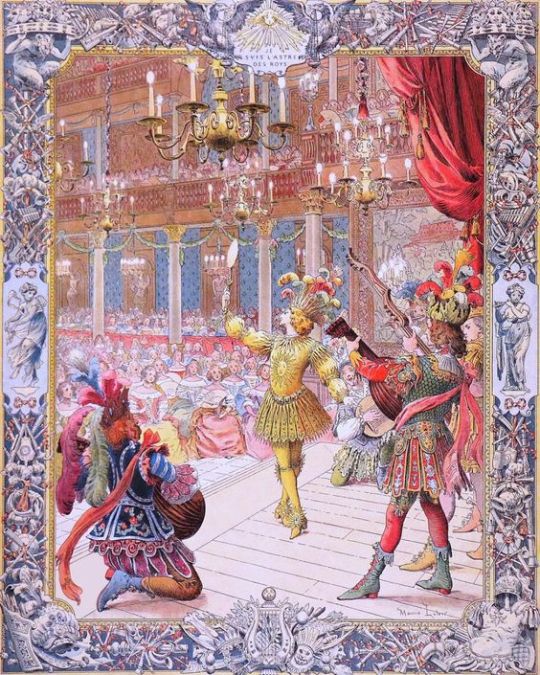
lebeaumonde.artblogger
"Je suis le Roi Soleil. – Le Ballet royal de la nuit, 1653". Illustration for "Le Roy Soleil" by Gustave Toudouze
Date: 1904
Artist: Maurice Leloir (French painter and illustrator, 1853 - 1940)
Location: Bibliothèque nationale de France, Paris, France
16 notes
·
View notes
Photo
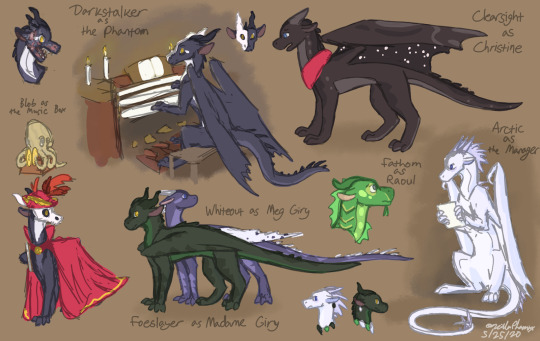


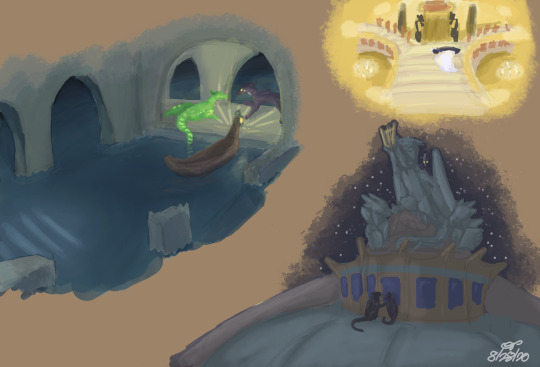
Hey wait I never talked about my Darkstalker Phantom of the Opera AU! The art’s kind of old but dang this was a fun AU. Based off of Legends: Darkstalker and both the musical and book versions of Phantom of the Opera, it follows the Darkstalker cast in a world where magic is replaced with music and Darkstalker is born with a malformed face. October’s a good time for PotO, right?
I know the first image says Fathom is Raoul but I was wrong about that, and had figured it out by the time I drew the rest of them. Listener makes a much better Raoul, and Fathom instead gets to share the role of the original novel’s Persian/Daroga with Indigo.
Lore under the cut:
It starts when Arctic, the star singer of the IceWing Opera Company, fell in love with an up-and-coming NightWing ballerina, Foeslayer, and ran away with her. The IceWings wanted Arctic back, of course, but the Opéra de la Nuit, the NightWings’ premier opera company, refuses to relinquish this new asset.
After a time, Arctic and Foeslayer hatched two children. Whiteout and Darkstalker inherited their parents’ artistic talent, but Darkstalker hatched with a deformed face that only intensified Arctic’s canonical abuse. At a young age, he ran away to join the circus.
Darkstalker traveled all over Pyrrhia, honing his musical skills with the circus, his murderous abilities with RainWing bandits, and his bitterness everywhere he stopped. For a time he ended up in the Sea Kingdom, apprenticing under Albatross as an architect alongside Fathom and occasionally serving as an assassin for Queen Lagoon. However the Royal SeaWing Massacre shattered this momentary peace. The new queen Pearl tried to have him killed on thin suspicions of his involvement in the massacre, and he only escaped with help from Fathom. Darkstalker fled back to the Night Kingdom, where his mother offered him a hiding place in the catacombs below the NightWings’ opera house.
Several years later, Foeslayer (Madame Giry) has ascended to the role of ballet-master, Whiteout (Meg Giry) has become an accomplished star of the ballet, and Arctic has been appointed as the new Manager of the Opera after the previous Manager retired suddenly, supposedly due to the activity of a mysterious Opera Ghost. A talented young NightWing singer named Clearsight (Christine) is being coached by a being she knows as the Angel of Music while trying to keep her childhood friend the Vicomtesse Listener (Raoul) out from his ever-present attention. Fathom and Indigo (the Daroga/Persian) are also there.
Clearsight tries to figure out how much she can trust her Angel and maintain her agency in the face of forces pulling her every which way; Listener tries to figure out how to convince her best friend not to trust a stalker; Whiteout and Fathom try and fail to convince Darkstalker not to kidnap or kill anyone.
Arctic thinks the Opera Ghost is a hoax and refuses to capitulate to the demands of a scammer, it’s his opera house and he’s going to run it how he wants even if the “ghost” does seem to know a little too much about him. Foeslayer tries to figure out how to convince her husband to please just go along with the ghost’s demands and not put everyone in danger.
Allknowing (La Carlotta) tries to figure out how not to lose her job to some upstart kid with a spooky tutor.
Darkstalker has his talons in all of this. Chandeliers get dropped, Clearsight gets kidnapped multiple times, Arctic gets murdered, nobody has a good day.
#wof darkstalker#The Phantom of the Opera#tw abuse#tw ableism#please appreciate my statue i spent a long time trying to translate the apollon into dragons#(warning for artistic nudity if you look up the original statue)#note: silverclaws is based on la sorelli (a very minor character from the book. she has a knife though so thats cool)#...this is more fleshed out than i thought i have a whole outline in my notes. i must have obsessed over this more than i remembered#anyway if you want any more context for anything just ask i'm happy to talk about this au and/or phantom of the opera as much as you want#and i have no idea how comprehensible this is#wings of fire
11 notes
·
View notes
Text
youtube
[Belladova-Opéra Garnier's ballerina(Giselle) and soprano(Richard Coeur-de-Lion)(Kopit's Phantom(90, 91)]
0:01 15th Century Chartres(French) hymn tune ( -> Saw You Never, in the Twilight(Cecil Frances Alexander)(1853)) - Michèle Lagrange
0:13 Giselle(, ou les Wilis (=Giselle, or The Wilis') 2:35 )(1841)(Music - Adolphe Charles Adam) (* Teri Polo who played Belladova(and Christine) had learned ballet for many years.)
1:25 Giselle(, ou les Wilis)(1841)
(Choreographer - Jean Coralli & Jules Perrot, Music - Adolphe Charles Adam, Libretto - Jules-Henri Vernoy de Saint-Georges & Théophile Gautier)
-----------------------------------------------
- Yvette Chauviré(Giselle) & Cyril Atanasoff(Albrecht)
(* Yvette Chauviré was a French 'Prima ballerina assoluta'(She is the only French dancer to hold the title) and actress. She is often described as France's greatest ballerina, and was the coach of prima ballerinas Sylvie Guillem and Marie-Claude Pietragalla. The role of Giselle was a particular passion for Chauviré, and she considered it her signature piece. Of course, she is considered one of the gratest Giselles in history.)
1:56 Carla Fracci(Giselle) & Erik Bruhn(Albrecht)
(* Carla Fracci was an Italian ballet dancer, actress and ballet director. Considered one of the greatest ballerinas of the 20th century, she was a leading dancer of La Scala Theatre Ballet in Milan, then worked freelance with international companies including the Royal Ballet, London, Stuttgart Ballet, Royal Swedish Ballet and American Ballet Theatre. Fracci is known for her interpretation of leading characters in several Romantic ballets, such as La Sylphide, Giselle, Swan Lake, and Romeo and Juliet. Fracci is considered one of the gratest Giselles in history too.)
--------------------------------------------------
5:34 & 6:20 Je crains de lui parler la nuit(= I'm afraid to talk to him at night)(André Grétry's Richard Coeur-de-Lion(=Richard the Lionheart)(1784)) - Michèle Lagrange
(* André Grétry(you might see his face at Belgium 1000 Francs) was a composer from the Prince-Bishopric of Liège (present-day Belgium), who worked from 1767 onwards in France and took French nationality. He is most famous for his opéras comiques.)
7:42 Je crains de lui parler la nuit
(André Grétry's Richard Richard Coeur-de-Lion(1784)) - Mady Mesplé
11:03 / 13:45 Пётр Ильи́ч Чайко́вский(Pyotr Ilyich Tchaikovsky)'s Пиковая дама(= Pique Dame = The Queen of Spades)(1890). Tchaikovsky(Чайко́вский)used Grétry's 'Je crains de lui parler la nuit'.(In Grétry's Opera, Soprano sings this, but in Tchaikovsky(Чайко́вский)'s opera, Mezzo Soprano sings this song.)
13:45 - Soňa Červená
15:31 - Sofia Preobragenskaya(acted by Yelena Polevitskaya)
(* Virginia Zeani - One of the greatest female opera singers of the 20th century - sang this song too(as a Countess in The Queen of the Spades(In Italian)). You can find that audio recording at youtube.)
17:29 Musical version (Kopit(Book) & Yeston(Music and lyrics)'s musical "Phantom"(1991))
P.S. You can see two famous actors - Burt Lancaster(7:39) and Олег Александрович Стриженов(Oleg Aleksandrovich Strizhenov)(14:54) in this video. From this film(Пиковая дама(1960)), Oleg Strizhenov received the Aleksandr Pushkin's Big Gold Medal and the prize of the Russian Musical Fund of Irina Arkhipova "for the brilliant realization of the figure of Hermann in the film Queen of Spades".
---------------------------------------
Playlist - Opera x The Phantom of the Opera(with English subtitles / 한글, 한국어 자막): https://youtube.com/playlist?list=PLxVjmfb0YlsGxobwIudGb5OJmVvDY7PSo
Playlist - The Phantom of the Opera 1990 × Opera(+English subtitles, 한글 자막): https://youtube.com/playlist?list=PLxVjmfb0YlsExPULC9h1BvlZfYX6sPzjs
Thank you for allowing me to use your 4k Phantom of the Opera 1990 video, Phantom Retrospective 2.0! https://youtu.be/8f3Hr422BPk
#the phantom of the opera#the phantom of the opera 1990#belladova#giselle#Richard Coeur-de-Lion#Pique Dame#The Queen of Spades#André Grétry#Tchaikovsky#Youtube
9 notes
·
View notes
Text
List of Ballets - B
Babek
Bacchus and Ariadne
Backchat
Le Baiser de la fée
Baldurs draumar
Ballet Comique de la Reine
Ballet de la Merlaison
Ballet égyptien
Ballet Royal de la Nuit
Ballo della Regina
Il ballo delle ingrate
The Bandits
Bar aux Folies-Bergère
Barbe-Bleue
Barber’s Adagio
Barber Violin Concerto
La Bayadère
Bayou
The Beauty of Lebanon or The Mountain Spirit
Beethoven Romance
Bella Figura
The Benevolent Cupid
Björk ballet
Les Biches
Billboards
Billy the Kid
Birthday Offering
Black and White
Blake Works I
The Blue Dahlia
Le Bœuf sur le toit
La Boîte à joujoux
Boléro
The Bolt
Le Bourgeois Gentilhomme
La Boutique fantasque
Brahms/Handel
Brahms–Schoenberg Quartet
Brandenburg
Broken Wings
Broadway Rhythm
Bugaku
1 note
·
View note
Text
Dancing London
Quelle belle journée de trajet (magie de l'Eurostar) et de balade à Londres. Ça faisait trop longtemps de n'avoir pas voyagé vraiment.
Je mesure l'amnésie post-traumatique qui m'a fait oublié les lieux (leur localisation) de mon dernier voyage dans cette ville en janvier 2009 peu avant de quitter mon taf pour cause de devenu sans intérêt avec une supérieure hiérarchique harcelante (disons : à la limite du harcèlement ; et qui avait fondu un fusible un soir, alors que je restais pour réparer une de ses bêtises technique). C'est étrange.
Normalement ma mémoire est bonne. Des bonnes choses en tout cas.
L'impression d'irréalité est renforcée par la température caniculaire et l'état de sécheresse visible de la ville - Hyde park qui était pour moi un espace vert très vert est sec comme du foin ; les bords de Tamise sont sableux il y a des plages qu'à la nuit les gens explorent avec des frontales par exemple, peut-être à la recherche d'objets égarés -. C'est donc un Londres tropical dystopique.
(dans le rêve que je suis en train de vivre ou serait-ce en vrai ?)
Des hommes se baladent torses nus comme à la plage et des femmes en burka. Pourrait-on faire une moyenne ?
Globalement il y a moins de nervosité prête à virer violente qu'à Paris.
Nous allons voir les locaux du Royal Ballet. En terrasse, en haut, un café. Nous sommes les seules touristes.
Une ligne de métro est toute neuve. C'est mieux qu'un tour de manège.
Nous dansons sur une place, devant un musée, une macarena puis une zumba, comme autrefois le madison.
La chambre d'hôtel est un réduit bon marché mais il n'y manque rien - sauf des tables de chevet -.
Pas de nouvelles de l'état de Salman Rushdie.
0 notes
Quote
A century later, King Louis XIV helped to popularize and standardize the art form. Louis was a ballet enthusiast from a young age, and by 'enthusiast,' I don't mean a keen and passionate observer. I mean a dancer. Encouraged by an Italian-born...cardinal in his court, Louis made his dancing debut at thirteen. Two years later, resplendent in a golden costume, he danced the lead part of Apollo in 'Le ballet de la Nuit'. (The spectacle lasted twelve hours.) The careful reader will note that Apollo is the sun god. The historically knowledgeable reader will remember that Louis was known as the Sun King. It was that fancy glittering costume...that earned him the nickname we know him by...In 1661 Louis established the world's first ballet school, the Académie Royale de Danse, in a room of the Louvre. Nine years later, at age thirty-two, he retired from dance, giving him ample time to lead the French invasion of the Spanish Netherlands, fight the Dutch, and embroil France in the Nine Years' War.
Meanwhile, ballet survived the king's retirement (and his wars), flourishing in the royal court, in the dance academy, and onstage...Then, in 1681 a ballet-master imported from – guess where – Italy staged 'Le Triomphe de l'Amour', featuring, for the first time, ballerinas. One of them, Mademoiselle de Lafontaine, is known was the 'Queen of Dance'. By now, ballet had permanently moved from court to stage. One trained to be a ballet dancer. It was a profession.
Raising the Barre: Big Dreams, False Starts, & My Midlife Quest to Dance the Nutcracker
#ballet#ballet history#louis xiv#cardinal mazarin#mademouselle de lafontaine#académie royale de danse#le ballet de la nuit#le triomphe de l'amour
421 notes
·
View notes
Photo

#the king dances#royal opera house#ROH#william bracewell#ballet#male ballet#male dancer#louis xiv#roi soleil#ballet de la nuit#dancer
3 notes
·
View notes
Text

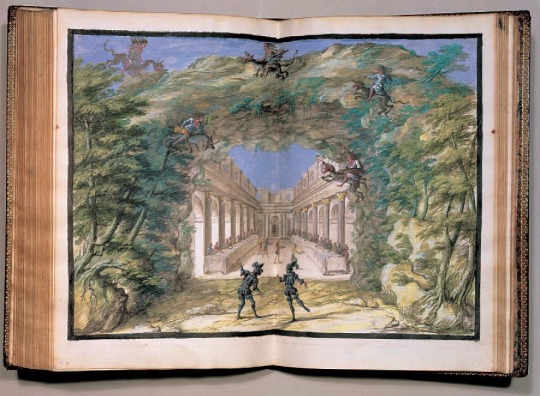
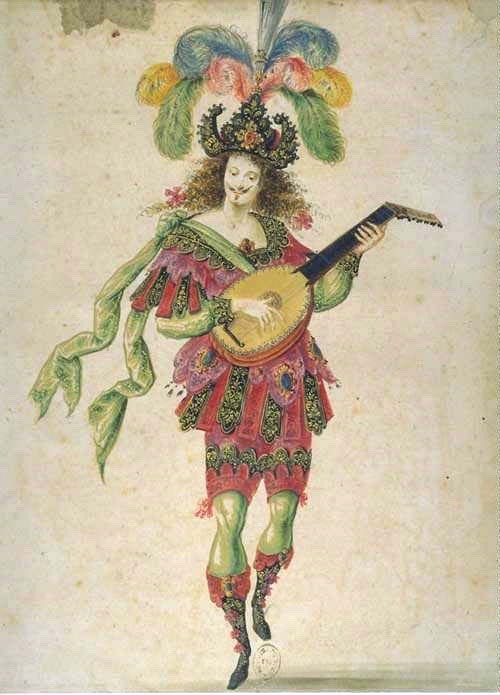

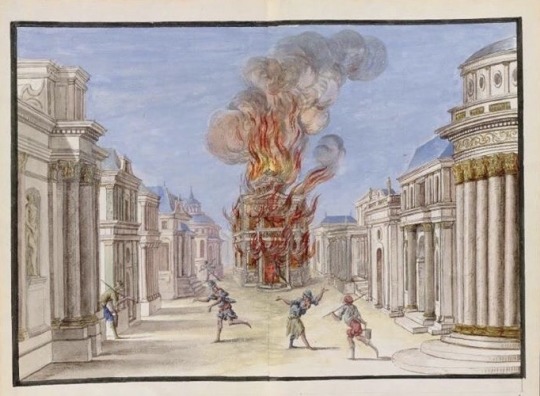

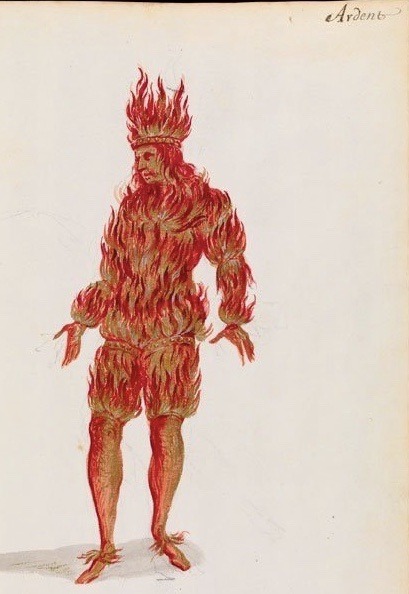
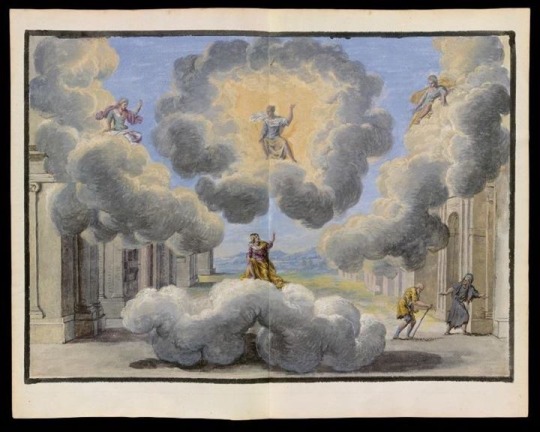


LE BALLET ROYAL DE LA NUIT
To mark the defeat of the Fronde, on 23 February 1653, a masque-like spectacle of dance and music was staged in the Salle du Petit-Bourbon in the Louvre in honor of the Queen regent, Anne d'Autriche, and her first minister, Cardinal Mazarin. Entitled the Ballet Royal de la Nuit, the piece was an epic, all-night production, commencing at 6:00 PM and concluding 13 hours later at 6:00 AM. Divided into four "watches," the performance comprised 45 entrées réparties, 3 ballets-within-the-ballet, numerous airs, and theatrical sketches. The 15-yr old Louis XIV, an accomplished dancer, appeared as several characters, including Le Sol Levant. When a paper backdrop caught fire during his performance, the young king kept calm to avert an audience panic, thus allowing the ballet to continue to its end. The ballet was performed 7 times over two weeks, and was revived several times in the later 17th and 18th centuries.
The subject and overall form of the ballet was conceived by Le Sieur Clément, intendant of the duc de Nemours. The concept called for the representation of gods and goddesses, allegorical figures, "low" scenes of gypsies, thieves, and peasants, and such "horreurs" as witches, werewolves and demons performing a Black Mass. The court poet Isaac de Bensérade wrote the texts, which were set to music by Jean de Cambefort, Jean-Baptiste Boësset, Michel Lambert and Louis de Mollier. The choreography, which is preserved in an early form of dance notation, is attributed to Mollier. The set designs by Italian scenographer Giacomo Torelli were engraved by Cochin and published in a lavish livre de fête. Drawings by Henri de Gissy made for a 1662 reprise of the ballet, record the original costumes designs.
Despite its arduous length and highly-artificial content, the Ballet Royal de la Nuit continues to be staged by modern dance companies.
158 notes
·
View notes
Text
Dark Royalty Core Playlist
People seemed to really like the Beltane playlist so I thought I’d post more of my playlists! I started making this one when I learned that the Dark Royalty Aesthetic was a thing, and I am so happy that it is a thing! It’s now one of my favorite aesthetics, and it got me into more traditional classical music. This is intended to be a “master playlist” -- some of these pieces are taken from oliviaalee on youtube, but many are favorites of mine.
“Masquerade - Ballet Suite: 1. Waltz” by Aram Khachaturian, London Symphony Orchestra, et.al.
“Expectation” by Herold Kittler, Nikolai Sergeyev, et.al.
“Leopoldine” by Ez3kiel
“An Extraordinary Tale” by Peter Gundry
“Ghost Waltz” by Abel Korzeniowski
“Dance of the Damned” by Peter Gundry
“Lestat’s Recitative” by Elliot Goldenthal
“Amur Waves” by Max Kyuss, Nikolai Nazarov, et.al.
“Gnossienne no. 1″ by Erik Satie, Alena Cherney
“Tocka” by Оркестр "Классика"
“Midnight Waltz” by Adam Hurst
“The Secret Garden” by Adrian von Ziegler
“The Second Waltz” by André Rieu, Johan Strauss Orchestra
“An Embassy Waltz” by Mickymar Productions Ltd and Failbetter Games
“Tonight Ve Dance” Peter Gundry
“Gramophone” by Eugen Doga
“Merry-Go-Round of Life” by Joe Hisaishi
“Cinderella, Op. 87, Act 1: No. 19, Cinderella’s Departure for the Ball” by Sergei Prokofiev, André Previn, London Symphony Orchestra
“Valse sentimentale, Op. 51, No. 6″ by Pyotr Ilyich Tchaikovsky, Josef Sakonov, et.al.
“Wood Carving Partita” (cover) by Tim Stoney
“Danse macabre, Op. 40: Poème symphonique d’après une poésie de Henri Cazalis” by Camille Saint-Saëns, Rudfunk Sinfonieorchester Berlin, et.al.
“Legacy of Sorrow” by Nox Arcana
“Nocturnal Waltz” by Johannes Bornlöf
“Incantato” by Adam Hurst
“A Midsummer Night’s Dream, Op. 61: Scherzo No. 1″ by Felix Mendelssohn, Staatskapelle Berlin, et.al.
“Serenade for Strings in E, Op. 22: 2. Tempo di valse” by Antonín Dvorák, Academy of St Martin in the Fields, et.al.
“The Shadow’s Bride” by Peter Gundry
“Nocturne No. 20 In C Sharp Minor, Op.posth” by Frédéric Chopin, Alice Sara Ott
“Ghost Bride” by Adrian von Ziegler
“Suite Gothique, Op. 25: I. Introduction et choral” by Léon Bollëmann, Michael Phol
“2 Romanian Rhapsodies, Op. 11: Rhapsody No. 1 in A Major” by George Enescu, Heinz Rögner et.al.
“Bagatelle No. 25 in A Minor, "Für Elise", WoO 59” by Ludwig van Beethoven, Lang Lang
“The Nocturnal” by Peter Gundry
“Piano Sonata No.14 In C Sharp Minor, Op.27 No.2 -"Moonlight": 1. Adagio sostenuto” by Ludwig van Beethoven, Daniel Barenboim
“Insomnies” by Ez3kiel
“Dance of Gold” (cover) by Tim Stoney, Kristin Naigus, et.al.
“Parliament of Owls” by Agnes Obel
“An Amalgamation Waltz 1839” by Joep Beving
“Dance of Pales” (cover) by Tim Stoney
***
“Symphonie Fantastique, Op. 14 (Episode de la vie d'un artiste) : II. Un Bal (A Ball)” by Hector Berlioz, Tbilisi Symphony Orchestra et.al.
“Ritual” by Adam Hurst
“Forest Tale” by Wilhelm Becker, Nikolai Nazarov, et.al.
“The Awakening” by Peter Gundry
“Ceremonial Spell” by Adrian von Ziegler
“Autumn Moon” by Eternal Eclipse
“Phantastic Dance No. 1″ by Dmitri Shostakovich, Christian Funke, et.al.
“Waltz of Souls” by Adam Hurst
“Agnus dei” by Samuel Barber, Roderich Kreile, et.al.
“14 Romances, Op. 34: No. 14, Vocalise” by Sergei Rachmaninoff, Jan Vogler, et.al.
“Holberg Suite, Op. 40: IV. Air” by Edvard Grieg, Staatskapelle Dresden, et.al.
“Gaspard de la nuit, M. 55: No. 3, Scarbo. Modéré in B Major” by Maurice Ravel, Cecile Ousset
“Waltz” by Eugen Doga
“Dorian’s Theme” by Charlie Mole
“Children's Corner, L. 113: IV. The Snow is Dancing” by Claude Debussy, Peter Rosel
“Duo in G Major: II. Air” by François Couperin, Barbara Sanderling, et.al.
“No.9 - Finale - Swan theme (Andante)” by Pyotr Ilyich Tchaikovsky, Royal Philharmonic Orchestra
“Organ Sonata in C Minor: I. Grave - Larghetto” by Julius Reubke, Michael Pohl
“Requiem for the Gods” (cover) by Wayne Strange, Chad Schwartz
“Death Waltz” by Adam Hurst
“Lacrimosa” by Wolfgang Amadeus Mozart, Lisa Beckley, et.al.
“Weeping Willow” by Gabrielle Aapri
“Eternal Slumber” by Yonder Dale
“Midnight Masquerade” by Nick Murray
“The Vampire Masquerade Organ Version” by Peter Gundry
“Cloak and Dagger” by Eternal Eclipse
“Appassionata” by Rolf Lovland, Secret Garden
“String Quartet No. 14 in D Minor, D. 810 "Death and the Maiden": II. Andante con moto - Arr. Gustav Mahler” by Franz Schubert et.al.
“Reflections” by Toshifumi Hinata
“Mariage d’Amour” by Jacob’s Piano
“Carnival of the Animals: XIII. The Swan” by Camille Saint-Saëns, Yo-Yo Ma
“Victor’s Piano Solo” by Danny Elfman
“Sofia’s Waltz” by Carvajal
“The Nutcracker, Op.71, TH.14 / Act 2: No. 14a Pas de deux: Intrada” by Pyotr Ilyich Tchaikovsky, Mariinsky Orchestra, et.al.
Spotify Link: https://open.spotify.com/playlist/3yFvAGB5xdoOELbmiJ136U?si=1d1f15e826ac445b
#dark royalty aesthetic#dark royalty core#dark royalty#dark masquerade music#masquerade#masquerade ball#waltz#waltzing with your enemy#classical music#classical music playlist#dark royalty aesthetic playlist#dark royalty core playlist#dark romantic#gothic aesthetic#gothic music#dark music#dark classical music#neoclassical music#playlist#spooky music#romantic music#dark aesthetic
117 notes
·
View notes
Photo

Henri de Gissey, Louis XIV dans Le Ballet de la nuit
“French court ballet reached its height under the reign of King Louis XIV. Louis founded the Académie Royale de Danse (Royal Dance Academy) in 1661 to establish standards and certify dance instructors. In 1672, Louis XIV made Jean-Baptiste Lully the director of the Académie Royale de Musique (Paris Opera) from which the first professional ballet company, the Paris Opera Ballet, arose. Pierre Beauchamp served as Lully's ballet-master. Together their partnership would drastically influence the development of ballet...” Ballet - Wikipedia
#henri de gissey#louis xiv#le ballet de la nuit#history of ballet#1600#jean-baptiste lully#pierre beauchamp#paris opera ballet
4 notes
·
View notes
Photo

Joseph Maurice Ravel was born on March 7, 1875. He was a French composer, pianist and conductor. He is often associated with impressionism along with his elder contemporary Claude Debussy, although both composers rejected the term. In the 1920s and 1930s Ravel was internationally regarded as France's greatest living composer.
Born to a music-loving family, Ravel attended France's premier music college, the Paris Conservatoire; he was not well regarded by its conservative establishment, whose biased treatment of him caused a scandal. After leaving the conservatoire, Ravel found his own way as a composer, developing a style of great clarity and incorporating elements of modernism, baroque, neoclassicism and, in his later works, jazz. He liked to experiment with musical form, as in his best-known work, Boléro (1928), in which repetition takes the place of development. Renowned for his abilities in orchestration, Ravel made some orchestral arrangements of other composers' piano music, of which his 1922 version of Mussorgsky's Pictures at an Exhibition is the best known.
A slow and painstaking worker, Ravel composed fewer pieces than many of his contemporaries. Among his works to enter the repertoire are pieces for piano, chamber music, two piano concertos, ballet music, two operas and eight song cycles; he wrote no symphonies or church music. Many of his works exist in two versions: first, a piano score and later an orchestration. Some of his piano music, such as Gaspard de la nuit (1908), is exceptionally difficult to play, and his complex orchestral works such as Daphnis et Chloé (1912) require skilful balance in performance.
Ravel was among the first composers to recognise the potential of recording to bring their music to a wider public. From the 1920s, despite limited technique as a pianist or conductor, he took part in recordings of several of his works; others were made under his supervision.
Ravel declined not only the Légion d'honneur, but all state honours from France, refusing to let his name go forward for election to the Institut de France. He accepted foreign awards, including honorary membership of the Royal Philharmonic Society in 1921, the Belgian Ordre de Léopold in 1926, and an honorary doctorate from the University of Oxford in 1928.
After Ravel's death, his brother and legatee, Edouard, turned the composer's house at Montfort-l'Amaury into a museum, leaving it substantially as Ravel had known it. As of 2018 the maison-musée de Maurice Ravel remains open for guided tours.
In his later years, Edouard Ravel declared his intention to leave the bulk of the composer's estate to the city of Paris for the endowment of a Nobel Prize in music, but evidently changed his mind. After his death in 1960, the estate passed through several hands. Despite the substantial royalties paid for performing Ravel's music, the news magazine Le Point reported in 2000 that it was unclear who the beneficiaries were. The British newspaper The Guardian reported in 2001 that no money from royalties had been forthcoming for the maintenance of the Ravel museum at Montfort-l'Amaury, which was in a poor state of repair.
Daily inspiration. Discover more photos at http://justforbooks.tumblr.com
31 notes
·
View notes
Photo
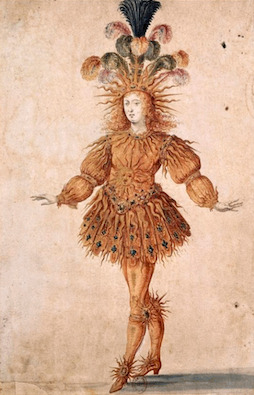
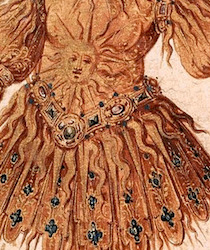
"Ballet Royal de la Nuit : Louis XIV en Apollon" (1653) présenté à la conférence “Le XVIIe Siècle à la Cour de France” par Julie Rohou - Conservateur du Patrimoine au Musée National de la Renaissance - Château d'Ecouen - pendant le cycle de cours d'été “De la Parure de Cour à la Joaillerie Parisienne : Une Histoire du Bijou” de l'Ecole du Louvre, juillet 2021.
5 notes
·
View notes
Text
✨ BALLET ROYAL DE LA NUIT🌙
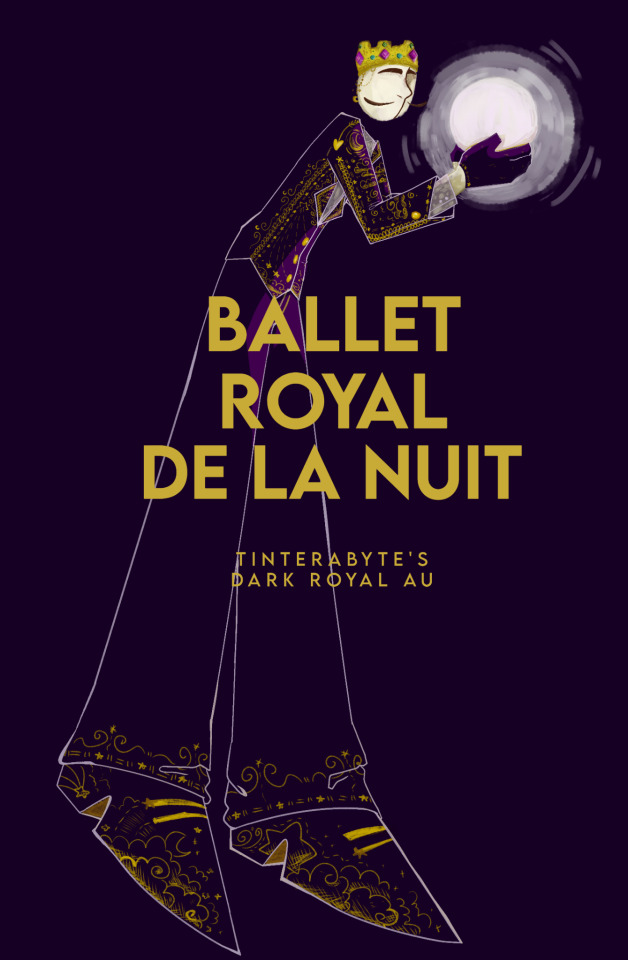


#artist#art#cute#artist on tumblr#dark royal#dark royalty#dark academia#royal aesthetic#crown#gold#ball poster#royal ball#painting#digital painting#thsc#the henry stickmin collection#toppat#toppat clan#toppat au#thsc au#reginald copperbottom#Tinterabyte_Dark royal AU#parb arts
25 notes
·
View notes
Text
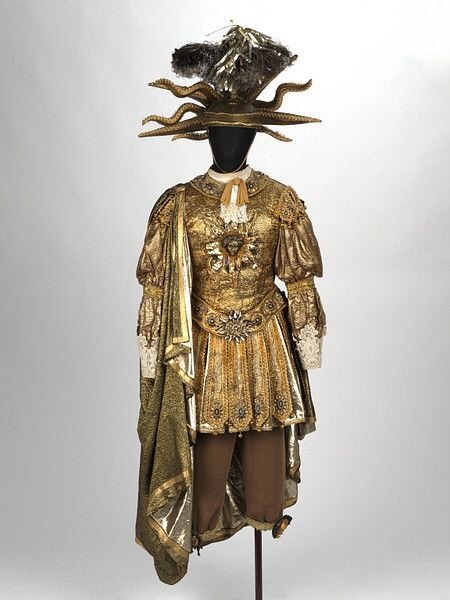
Louis XIV’s Apollo costume. Costume by Henri Gissey for the Ballet Royal de la Nuit, 1653.
Louis XIV wore this costume to the Ballet Royal de la Nuit, a ballet where he himself actually deigned a lot of the costumes.
In terms of how aesthetically appealing this costume actually is ... hmm. I’m not sure about the hat.
#17th century#17th century fashion#fashion#french fashion#louis xiv#rococo#16th century#18th century fashion#16th century fashion#barocco
38 notes
·
View notes
Text
Pro parenting tip: If your toddler suddenly starts refusing to sleep through the night in her own bed (after 3.5 years of independent snoozing perfection), bribe the child with increasingly dramatic, over-the-top, out-dated symbols of conspicuous consumption.
We are at "you can have a chocolate fountain if you make it ONE (1) NIGHT!" but at this point, we are willing to give her a fully-costumed historical reenactment of Ballet Royal de la nuit featuring her as Apollo and a peacock feast at the Palace of Versailles (just gotta find a local free range peacock farm cuz we're not monsters!)...
#parenting#chaotic neutral toddler#do you want veruca salt?! because this is how you get veruca salt...#chaotic neutral family
7 notes
·
View notes